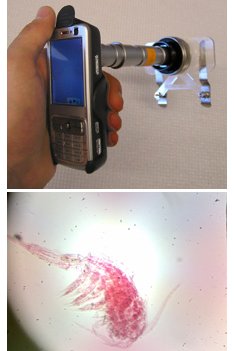How to Add or Remove Shortcuts and Icons in Quick Launch Bar Folder
Quick Launch bar on Windows Taskbar lists icons of shortcuts for user defined frequently used programs so that users can easily and quickly access and run the program when needed. After installing Windows Vista, which Quick Launch feature is enabled by default, or turn on and show Quick Launch bar in Windows XP, it’s time to manage and modify Quick Launch bar to add in commonly used shortcuts or remove unwanted icons in Quick Launch bar.
Continue reading »
How to Create a Shortcut to Close the CD/DVD Drive
We can create a shortcut to open or eject the CD/DVD drive, it’s time to create another shortcut to close the CD/DVD-ROM or CD/DVD burner or writer drive disc tray automatically. The “Close CD” shortcut is useful for users who place computer at a distance away or in obscure inconvenient position that they able to close the drive without the need to press on physical button on the optical drive.
Continue reading »
CellScope High Magnification Microscope Mobile Phone Accessory for Medical Usage
You may have heard of telescopic scope as one of the famous accessory in mobile market. Now there seems to be a similar trend of coming up with microscopic scope that can fit into different market requirement. The CellScope was developed by a team of researchers in University California aiming for those mobile users that would like to diagnose their blood samples or inspect tiny specimens anywhere anytime.

Continue reading »
How to Disable Quick Launch Bar Feature
In Windows Vista and Windows XP (if you have manually enable the Quick Launch bar), Quick Launch bar will take up a position in the Windows Taskbar, which normally resides right beside the Start Menu. If the area of Taskbar location occupied by Quick Launch bar is precious and important to you, or you’re not actively using Quick Launch shortcuts, it’s possible to reclaim the space by disable Quick Launch feature.
Continue reading »
How to Enable and Show Quick Launch Folder/Bar in Windows XP
Quick Launch bar or folder that sits on the Windows Taskbar area, offers users a way to easily and fast access frequently and commonly used application software. Programs appear as an icon shortcut in Quick Launch bar, and with just a single click on the shortcut’s icon, users can run the program instantly, saving considerable time by eliminating the need to navigate and locate the program in Start Menu. And since, Quick Launch bar is located on taskbar, so no other open windows may block or obscure the shortcuts in it, unlike desktop shortcuts.
Continue reading »
Windows Vista SP1 Language Packs (MUI) 32-bit (x86) Unofficial Downloads
Windows Vista Ultimate and Enterprise editions’ license EULA allows installation of MUI (Multilingual User Interface) language packs to translate and change UI display language to another language for menus and dialogs. With MUI, users can switch display languages without reinstalling Windows Vista. However, with the release of Service Pack 1, the MUIs meant for Windows Vista RTM can no longer be installed with the following error message.
Continue reading »
How to Install MUI Language Files in Windows Vista
Multilingual user interface (MUI) language packs in Windows Vista enables users to change the language Windows uses to display text in wizards, dialog boxes, menus, and other items in the user interface. Every Windows Vista system actually run on a display language that installed while setup Windows Vista. To change or switch to other different display languages, additional MUI language packs have to be installed.
Continue reading »
How to Change the Display Language (Including Welcome Screen) in Windows Vista
The display language is the language that Windows uses in wizards, dialog boxes, menus, Help and Support topics, and other items in the user interface (UI). In Windows Vista, additional display languages in MUI (Multilingual User Interface Language Pack) can be installed by users of Windows Vista Ultimate and Enterprise editions (other editions allow only one display language). When there is more than one languages installed, users can change and switch display language using steps below.
Continue reading »
Recent Articles
- How To Download HBO Shows On iPhone, iPad Through Apple TV App
- Windows 10 Insider Preview Build 19025 (20H1) for PC Official Available for Insiders in Fast Ring – Here’s What’s News, Fixes, and Enhancement Changelog
- Kaspersky Total Security 2020 Free Download With License Serial Key
- Steganos Privacy Suite 19 Free Download With Genuine License Key
- Zemana AntiMalware Premium Free Download For Limited Time





